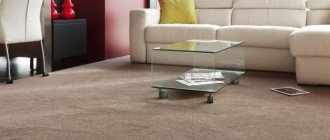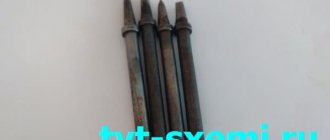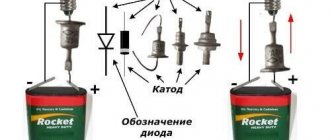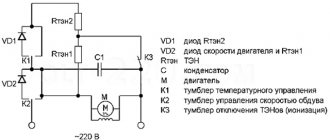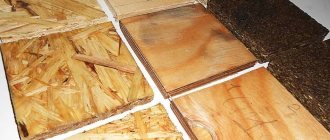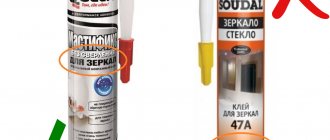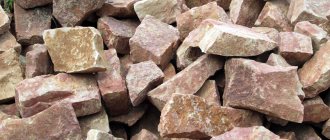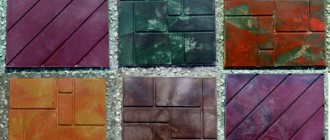Preparing to lay carpet on a concrete floor
To properly lay carpet on concrete, you must follow a number of recommendations.
- The humidity level in the room where the covering is planned should be from 20 to 65%, and the temperature - +18 to +35 degrees.
- Before installation, the material must acclimatize - it must be brought into the room and left for 1-3 days.
- Make sure the concrete base is completely dry.
- After drying, seal all cracks and remove defects.
- Treat the cement screed with chlorine solution to prevent the appearance of fungus.
- Apply primer to the surface and wait until it dries completely. Thanks to it, the concrete base will become strong and will not crumble.
Glue mounting
Carpet laid with glue, due to its strong fixation, will last longer even in high-traffic areas. Another plus is that during the flooring process you can carefully level the coating while the adhesive has not yet dried.
The disadvantages include the labor intensity of the method and the impossibility of reusing the coating when removing it.
Work order:
- The backing is glued to a flat, clean surface.
- The covering is laid on the floor and straightened, and an adhesive solution is prepared.
- The material should be attached as follows: bend half of the fabric, apply glue to the floor surface and return the raised part of the carpet to its place. Be sure to straighten and slightly stretch the canvas from the center to the edges. The same is done with the second half.
- The covering is trimmed along the walls, and the plinth is installed.
Do not walk on the glued area until it is completely dry, and also do not push the coating too hard: the glue may seep into the fibers and the surface will be damaged.
This method is quite complicated, so many people decide to trust the professionals instead of attaching the carpet themselves. The price of such a service starts from 250 rubles per m2, excluding the cost of laying the substrate and preparing the subfloor.
Before you start gluing the carpet, make sure that its base does not absorb the glue. It is best to conduct the experiment on a small piece of material - this way you will know for sure that the pile will not stick together after installing the canvas.
The adhesive method is optimal when laying carpet on stairs. On straight spans it is convenient to lay the material in a “waterfall” pattern using a single strip. The second installation option – “head” – is suitable for any type of staircase, including spiral ones. In this case, for each step with a riser, separate pieces are cut out using paper templates.
Applying glue
Fastening individual pieces to steps USEFUL INFORMATION: Technology of hot welding of linoleum: tools and materials
Underlay for carpet on concrete - is it necessary?
If when laying carpet on a wooden floor or other base, laying the underlay is not necessary, then in the case of a concrete surface, its use is highly desirable.
The underlay will make the floor softer, extend the life of the carpet, and protect the material from moisture that will come from the concrete.
Read the detailed article about carpet underlay.
It is better to secure the underlay material with glue, since it will also hold the carpet, and for this the backing should be secured as securely as possible.
What to glue carpet on
Lay the carpet on the concrete floor at a room temperature of at least +15 degrees.
The coating should be laid out in the room a day before installation work to allow it to level and acclimatize. To work you will need the following tools:
- a construction knife or an ordinary, well-sharpened knife;
- dense roller;
- screwdrivers for mounting skirting boards;
- spatula for gluing work.
To glue the coating to a concrete base, you need to purchase the appropriate adhesive. Typically polyurethane glue is used. Reaction and universal glue are also suitable for this purpose.
Technology for laying carpet on a concrete floor
There are several ways to lay carpet on concrete.
- On glue. The carpet is glued to the concrete floor using special or regular PVA glue, or Bustilat.
- With double-sided tape. Optimal for small spaces. The screed under the carpet must be perfectly flat.
- Perimeter fastening. The canvas is held in place only by the baseboards. Suitable for small spaces.
- Stretching. A method of attaching carpet to special slats installed around the perimeter. Mainly used for large rooms. A special tool is required to tension the fabric.
Next, we will consider each method of installing carpet on a screed in more detail.
Important! With any installation method, it is necessary to roll out the carpet correctly, otherwise folds, bubbles, etc. may appear after laying. To roll out, use a special plastic spatula or roller.
And one more piece of advice: if several panels are laid, the joint between them should be perpendicular to the window opening, so it will be less noticeable.
How to lay carpet on a screed using double-sided tape
A simple and fairly quick installation method. Another advantage is the ability to dismantle the coating and use it again. Step-by-step description of the process:
- First we glue double-sided tape around the perimeter of the room.
- Next, we glue the tape in the form of a grid with a pitch of approximately 50 cm (do not tear off the outer protective layer).
- Carefully lay the carpet against one wall and gradually unwind the roll and remove the outer protective layer of tape. Carefully smooth and press down the material.
- Trim excess parts, install skirting boards, thresholds, etc.
Useful article about all the methods of laying carpet.
How to glue carpet to concrete floor
The next installation method is with glue. To choose the best way to glue carpet to concrete, read the article about this consumable.
- After following the above recommendations, roll out the canvas around the room.
- We lift one side up to half and fold the material in half.
- Coat the freed surface with a thin layer of glue. You can use a notched trowel for this. Don't apply too much glue or excess glue will come out around the edges.
- Let the glue sit for 10-15 minutes (according to the instructions on the package).
- Now you can lay the carpet, carefully smoothing it so that there are no bulges or folds.
- We do the same with the second half of the canvas.
- We install skirting boards, thresholds, etc.
Find out more about carpet skirting boards.
Advice! Excess carpet is cut from the center, and not from the corner, this way you will avoid a crooked cut. You should cut from the inside of the material.
How to lay carpet on concrete using the stretching method
This method is the most difficult, it requires experience and the use of a special tool - a stretcher. But you can lay the underlay under the carpet without gluing it to the surface of the concrete floor. We advise you to contact specialists if the coating is installed using this method in a room with an area of more than 20 sq. m.
- Gripper slats with two rows of nails driven into them are installed along the perimeter of the room.
- First, the material clings to the slats on one side of the room, then, using a special tool, it is pulled onto the slats on the other side of the room.
- Next, the baseboards and thresholds are installed.
Free styling
A quick, simple and economical method, carried out using skirting boards instead of fastening material.
Suitable only for rooms with constant temperature and humidity, a perfectly level subfloor and stationary furniture without wheels. In addition, such a coating cannot be cleaned with a vacuum cleaner.
Procedure:
- The underlay is laid on the floor and secured with a stapler in increments of 20 cm. The joining points are taped.
- The carpet is rolled out with an allowance for the walls of approximately 5–7 centimeters.
- V-shaped cuts are made in the corners.
- The surface of the carpet is leveled using a roller from the center of the floor to the walls.
- The covering is stretched and secured with a plinth and a metal strip near the doors.
USEFUL INFORMATION: Warm floors under tiles: which is better, reviews
In this way, carpet can be laid on concrete if the surface is sufficiently flat.
Acrylic adhesive for carpet
When covering the topic of how to glue carpet, one cannot forget about acrylic adhesives, which do not contain any solvents and are therefore ideal for attaching carpet.
Advantages of acrylic glue:
- Non-toxic.
- Contains no volatile organic solvents and only a minimum of water.
- Does not shrink during the hardening process.
- Unsurpassed bond strength between bonded surfaces.
- Resistant to negative temperatures.
- Can be used for underfloor heating systems.
- Possibility of using thermoactive seams.
There are acrylic Velcro compounds that greatly increase bond strength. Such adhesives have a noticeably shortened setting time (up to 25 minutes); later, products fixed with such a composition can be easily dismantled. This glue can be removed from the carpet if you use an alkali-containing detergent.
Shoe marks are not imprinted on the coating glued with its help. 0.4-0.5 kg of acrylic glue is used per square meter of base.
Installation of carpet with acrylic glue
- Before gluing, the material must be carefully cut in accordance with the topology of the room, and before that it must be kept rolled out on the floor for at least a day to get rid of creases and bends.
- Before using the glue, it must be thoroughly mixed until smooth. If a polymer film appears on the surface of the liquid in the jar, you should get rid of it.
- Apply the glue with a relief spatula onto the previously prepared base, then place the floor covering on it and press firmly to the base.
- After gluing for 4-5 hours (or better for the entire time until final drying - 3 days), the edges of the coating need to be loaded.
Work can only be carried out in heated rooms and at a humidity of no more than 75%.
Do you glue carpet? What glue do you use and why? Tell us about your choice in the comments and explain it.
Kinds
What is the best way to glue linoleum to a concrete floor? It is enough to consult with a competent specialist or carefully study the properties of adhesives for floor coverings yourself.
When gluing they use:
- bitumen mastics;
- dispersion adhesive masses;
- reaction adhesives;
- mastics based on rubber and synthetic resins.
Which glue will most firmly fix linoleum to a concrete floor, as well as how to choose mastic or glue, is discussed in detail in the article.
Dispersion adhesives
One of the options for reliable fixation of the coating on a concrete floor. Its composition does not harm the environment and is also highly elastic. It does not harden when applied, and its consumption is economical. Since it is water-based, it is non-toxic and does not emit a strong odor. Among the disadvantages is the loss of properties at low temperatures and high humidity.
Which dispersion glue to glue linoleum to a concrete floor, you can choose from the following options:
- "Gumilax" is a mixture of rubber and latex, used for fixing natural linoleum or coverings based on fabric or felt.
- “Bustilat” is a universal glue based on chalk and latex that reliably fixes the fabric on a fleecy base.
- Acrylate adhesive is a mixture based on thermoplastic resins, the most viscous and reliable substance for adhesion of the canvas to the concrete floor. Provides high-quality fixation to coatings even with highly absorbent substrates.
All methods of gluing to dispersion compositions are based on the following principles:
- the coating spreads immediately after application;
- the thickness of the adhesive layer is at least 6 mm;
- The mixture is applied using a notched trowel.
Reactive or multicomponent
How to glue linoleum to concrete in a commercial space?
You need to opt for a reaction glue. Its operating principle is based on the ability to react with the base of the canvas, thereby dissolving it. At the same time, achieving maximum strong adhesion to the concrete surface.
This type of glue is not suitable for use at home due to its toxicity and intense pungent odor. It is explosive and fire hazardous. Reaction mixtures are often used for gluing joints between sheets. It is because of their properties that they are called “cold welding”. It happens:
- A-type. The consistency is liquid. It is used for gluing the joints of new fabric, resulting in perfectly even seams that can only be noticed by touch.
- C-type. Thick consistency. It is used for gluing previously used canvases with distances of up to 4 mm between them.
What else
If none of the types of glue are suitable and the question remains open, you can use mastic or double-sided adhesive tape. Mastic can be purchased at any hardware store or prepared at home yourself.
The most popular bitumen mastic is “Biskey”. It has a bitumen-polymer base. With its help, the covering with a fabric layer is securely fixed to the concrete floor. The difference between mastics and adhesives lies in the exposure time of the layer after application. The mastic is applied not only to the floor, but also to the bottom layer of the canvas.
Positive properties of mastic:
- smoothes out uneven concrete floors;
- ensures reliable fixation of the canvas on the concrete floor;
- does not lose its properties from exposure to moisture.
Gluing linoleum to double-sided construction adhesive tape only makes sense if the room is small and has low traffic. Because this type of fastening is unreliable. Tape can be used to glue joints.
Types of carpet
- Carpet made of natural wool. This coating is elastic, environmentally friendly and has antistatic properties. Wool carpet will not lose its color and brightness for a long time.
- Nylon fiber. The most important quality of such carpet is wear resistance. If you properly care for the coating, it will serve you for fifteen years. It is elastic and easy to clean.
- Acrylic fiber. The texture of this carpet has an imitation of wool, but differs from wool pile in that it is not elastic. Its pile is hard, and this plays a big role when cleaning it.
- Carpet is also distinguished by the type of pile. The pile can be cut, twisted, looped, two-level or single-level.
Kawabanga! How to choose a putty for concrete
Polyurethane backings
Among the most popular brands of polyurethane for carpet underlays, products from such companies stand out.
Polyurethane substrates are also popular, which is considered a more durable and elastic material.
Greep green products are popular, which are additionally treated with antifungal compounds
Important! The polyurethane base is suitable for various carpet laying technologies. The material can be glued, a non-fixing installation method can be used, the covering can be tensioned and secured using special strips.
